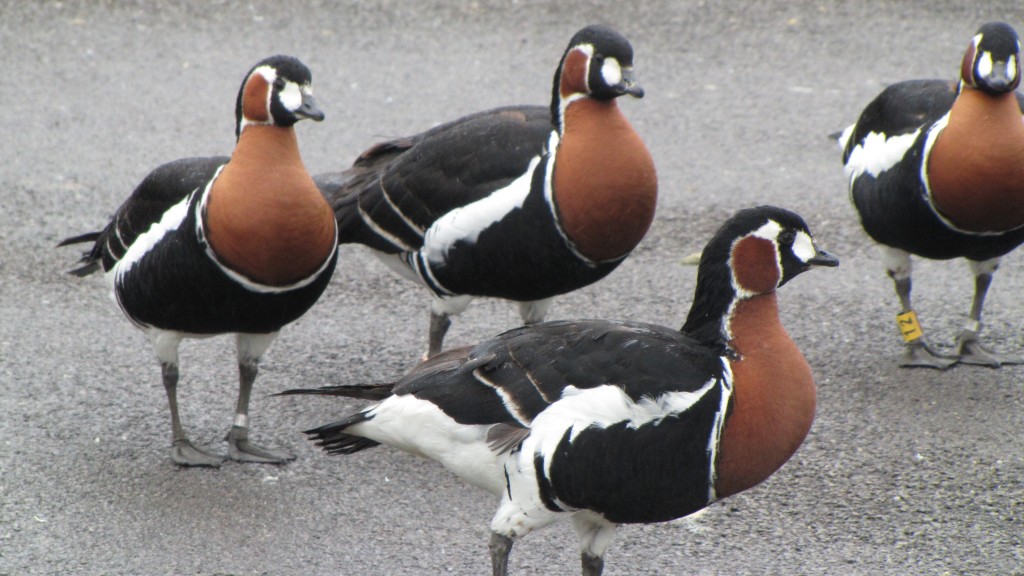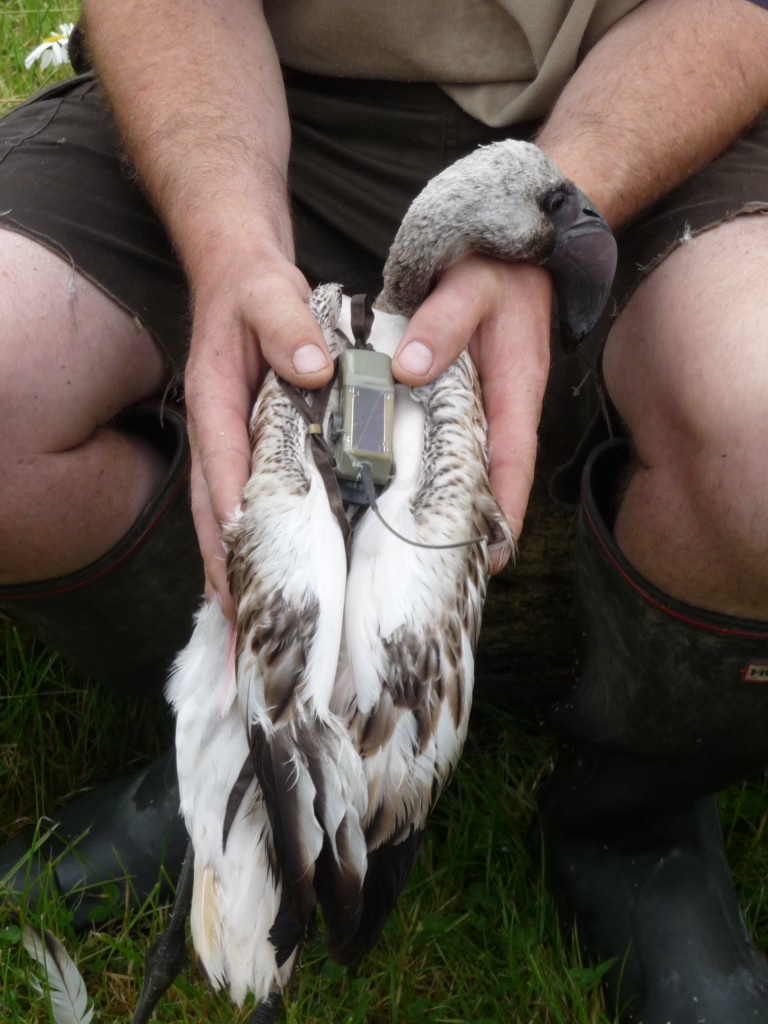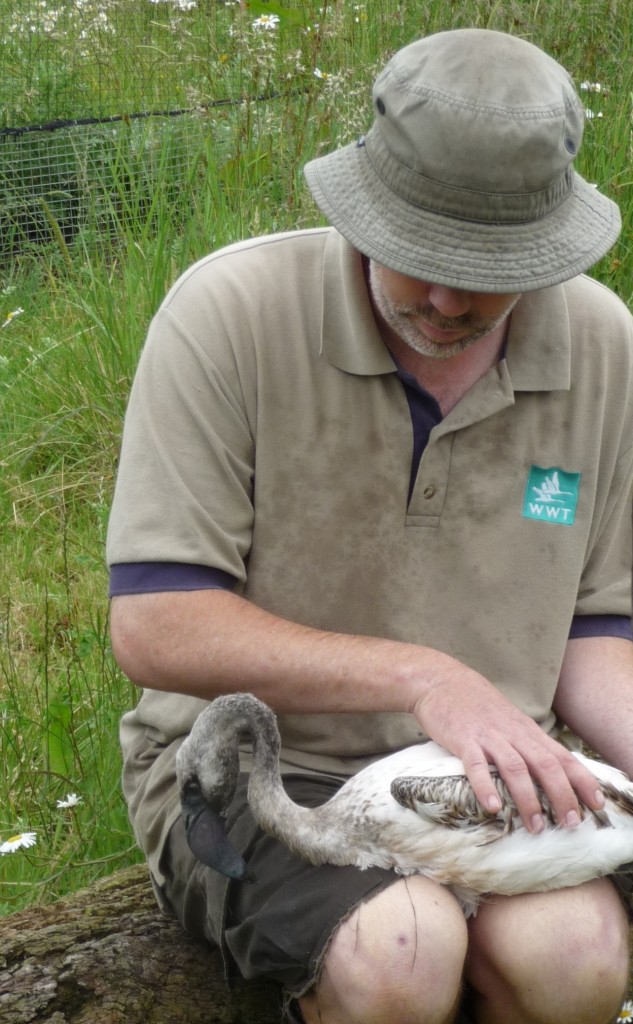Migratory wildfowl and flamingo travellers?
I thought I would run a topical flamingo post for this time of the year as Slimbridge, and other WWT centres, are filling up with migrant wildfowl flocking to the UK to escape the worst of the Northern Hemisphere's winter weather. Much is known about the movements of these migratory birds, and long-term studies by WWT on key species such as Bewick's swans (Cygnus columbianus bewickii) and whooper swans (C. cygnus), as well as work on brent geese (Branta bernicla), barnacle geese (B. leucopsis) and white-fronted geese (Anser albifrons) have enabled scientists to identify key flyways, chosen areas for feeding and resting, and specific distances that the birds will move to find resources. This research idea is being used on wild flamingo flocks to gain a better understanding of the movements of these highly nomadic birds between feeding and nesting grounds.

Wild flamingos are not truly migratory. They are itinerant wanderers. Ebbing and flowing in their movements with irregularity and an apparent lack of planning. Flamingos don't need to "do" the planned, well-timed, highly-defined migration routes of those birds of norther climes. The flamingo is a lot freer to pick and chose where it goes. The lesser flamingo of East Africa is one such species that will benefit from our clearer understanding of how, when and why flocks move around the Rift Valley lakes. Current research in the conservation department at WWT's head quarters in Slimbridge is focusing on the rare red-breasted goose (Branta rufficolis); Dr Peter Cranswick, an ornithologist with a keen interest in the population dynamics of this species has been able to show that radio harnesses used for red-breasted geese can be fitted to lesser flamingos. The photo and video link below can show you this in action.
The juvenile lesser flamingo in the photos, expertly held by aviculturist Phil Tovey, is being restrained so that a goose-sized harness can be fitted to check that this type of equipment would be suitable for lesser flamingos to wear out in the wild.
[yframe url='http://www.youtube.com/watch?v=V1gZYCDKfW4&feature=youtu.be']
Such work is not 100% new, as WWT has attempted satellite tracking of lesser flamingos before and the findings of this research are published and widely available in the biological literature. A good link to work done by scientists at WWT and those working out in Africa can be found here: jncc.defra.gov.uk/PDF/pub07_waterbirds_part3.4.6.pdf
Lesser flamingos are of conservation importance. Changes to the ecology of their feeding lakes and potential human disturbance to their nesting areas means the work of scientists at WWT is all the more important. By identifying and analysing the movement patterns of flamingos, protected areas can be established and conservation programmes focused on the key sites that flamingos really need to survive well into the future. So whilst the winter season is the time of the migratory swan and goose, the flamingo is not completely forgotten. These bright pink birds of the tropics are benefiting greatly from the methods used on their not-too-distant cousins.




